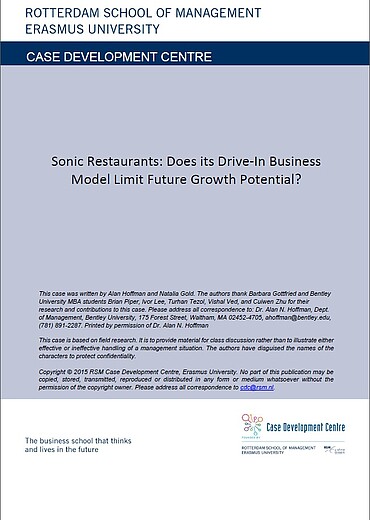description
Sonic is an iconic American drive-in fast-food chain with thousands of franchise establishments across the US. As Sonic continues to expand, it enters urban environments where space is too scarce to make its drive-in model possible. At the same time, the drive-in does not have the same emotional appeal to international consumers.
Citation Note
Based on field research; 9 pages.
Follow the 'handle' link to access the Case Study on RePub.
For EUR staff members: the Teaching Note is available on request, you can contact us at rsm.nl/cdc/contact/
For external users: follow the link to purchase the Case Study and the Teaching Note.
Abstract
Sonic is an iconic American drive-in fast-food chain with nearly thousands of franchise establishments across the vast land of the United States by 2014. As Sonic continued to expand, it ran into various hurdles. The most daunting challenge was to enter urban environments where space was too scarce to make drive-in possible. At the same time, while the drive-in model was highly effective in the US thanks to nostalgia, it did not have the same emotional appeal to international consumers. Should Sonic move away from the drive-in model and reinvent itself? If so, would it become just another fast food burger joint with a customizable menu? And how could it compete with larger players such as McDonald’s and Burger King that already had a substantial urban and international presence?
